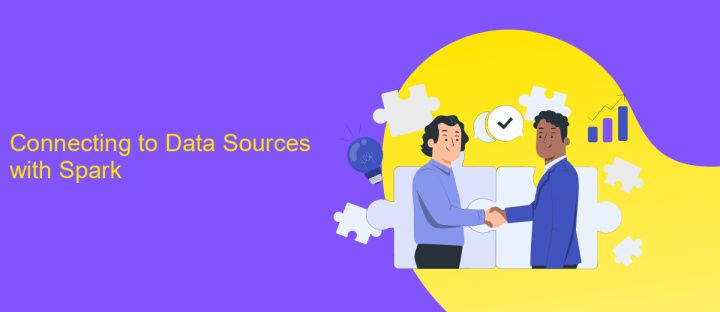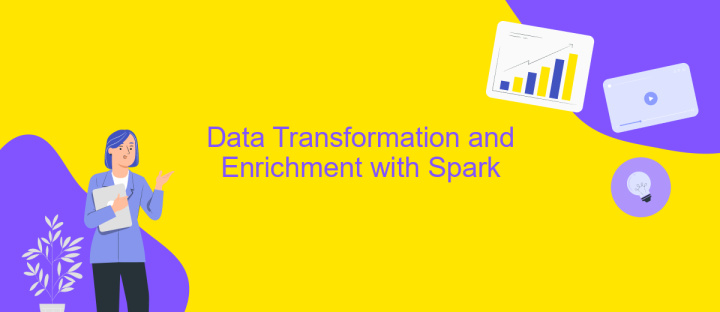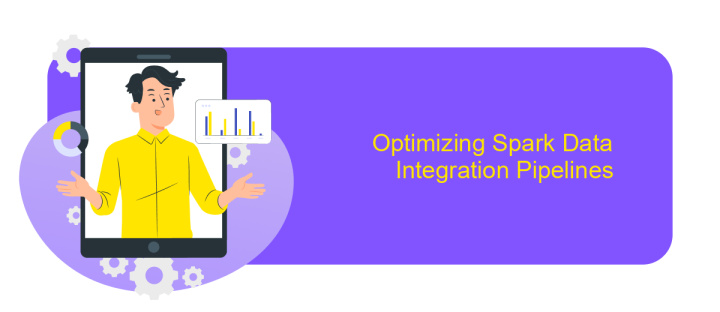Spark Data Integration
In today's data-driven world, efficient data integration is crucial for businesses seeking to leverage their data assets. Apache Spark, with its powerful processing capabilities, has emerged as a leading solution for handling big data integration tasks. This article explores how Spark simplifies the data integration process, enhances performance, and enables organizations to seamlessly consolidate disparate data sources into a cohesive, actionable framework.
Understanding Spark's Data Integration Capabilities
Spark, a powerful data processing engine, excels in data integration by seamlessly handling large-scale datasets from diverse sources. Its robust architecture allows for efficient data processing, making it an ideal choice for businesses aiming to integrate and analyze data swiftly. Spark's ability to process data in-memory significantly reduces latency, providing real-time insights and enhancing decision-making processes. Its versatility in supporting various data formats and sources ensures smooth integration across different platforms.
- Supports multiple data sources such as Hadoop Distributed File System (HDFS), Apache Hive, Apache HBase, and Apache Cassandra.
- Enables real-time data processing through its Structured Streaming feature.
- Offers built-in connectors for seamless integration with popular databases like MySQL, PostgreSQL, and MongoDB.
- Facilitates data transformation and cleaning with its comprehensive API support.
- Ensures scalability and fault tolerance through its distributed computing framework.
By leveraging Spark's data integration capabilities, organizations can streamline their data workflows, enhancing operational efficiency and gaining a competitive edge. Its open-source nature and active community support further contribute to its adaptability, making it a preferred choice for data engineers and analysts. As businesses continue to embrace big data, Spark's role in facilitating seamless data integration is becoming increasingly pivotal.
Connecting to Data Sources with Spark

Spark provides a versatile platform for connecting to a wide variety of data sources, enabling seamless data integration and processing. Whether you're dealing with structured data from traditional databases or semi-structured data from JSON or XML files, Spark's robust API makes the process straightforward. By leveraging Spark's native connectors, users can easily interact with popular data storage systems like HDFS, Apache Hive, and Apache HBase. Additionally, Spark supports JDBC for connecting to SQL databases, allowing for efficient querying and data manipulation. This flexibility ensures that Spark can be integrated into diverse data environments, making it an invaluable tool for data engineers and analysts.
For those seeking to streamline data integration processes, services like ApiX-Drive can be a game-changer. ApiX-Drive offers a no-code platform for automating data workflows, which complements Spark's capabilities by simplifying the setup of data pipelines. By using ApiX-Drive, users can automate the transfer of data between various sources and Spark, reducing manual effort and minimizing errors. This integration empowers businesses to focus on deriving insights from their data rather than getting bogged down in the complexities of data movement and transformation. Together, Spark and ApiX-Drive provide a powerful solution for modern data integration challenges.
Data Transformation and Enrichment with Spark

Data transformation and enrichment are pivotal processes in data integration, enabling organizations to convert raw data into valuable insights. Apache Spark, with its robust processing capabilities, provides a powerful platform for these tasks. By leveraging Spark's distributed computing framework, users can efficiently handle large datasets, perform complex transformations, and enrich data to meet analytical needs. Spark's versatility supports various data formats, making it an ideal choice for diverse data integration scenarios.
- Data Cleaning: Spark allows for the removal of inconsistencies and errors, ensuring data quality.
- Data Aggregation: It supports summarizing data, enabling the extraction of meaningful patterns and trends.
- Data Enrichment: Spark can integrate additional data sources, enhancing the dataset with external information.
- Data Transformation: Users can apply complex operations to reshape data, preparing it for analysis.
By utilizing Spark for data transformation and enrichment, organizations can achieve faster processing times and improved scalability. This empowers data teams to focus on extracting actionable insights rather than managing data logistics. As a result, Spark not only enhances the efficiency of data workflows but also drives innovation by unlocking the full potential of enterprise data assets.
Optimizing Spark Data Integration Pipelines

Optimizing Spark data integration pipelines is crucial for enhancing performance and efficiency. A well-optimized pipeline reduces execution time and resource consumption, enabling faster data processing and integration. To achieve this, it is essential to focus on both the configuration of Spark and the design of the data pipeline itself.
Firstly, ensure that your Spark cluster is properly configured. This includes setting the right number of executors, adjusting memory allocation, and tuning other Spark parameters. Additionally, data partitioning plays a significant role in optimization. Proper partitioning ensures balanced data distribution across nodes, minimizing data shuffling and improving parallel processing.
- Utilize data caching to avoid redundant computations.
- Optimize join operations by using broadcast joins for smaller datasets.
- Leverage Spark's built-in functions for efficient data transformations.
- Monitor and profile your pipeline to identify bottlenecks.
By implementing these strategies, you can significantly enhance the performance of your Spark data integration pipelines. Continuous monitoring and adjustment are necessary to maintain optimal performance as data volumes and processing requirements evolve. With careful optimization, Spark can efficiently handle large-scale data integration tasks.


Best Practices and Common Challenges in Spark Data Integration
When integrating data using Spark, adhering to best practices is crucial for efficient and reliable workflows. Firstly, ensure data is partitioned effectively to leverage Spark's distributed computing capabilities. This can significantly enhance performance by minimizing data shuffling. Additionally, optimize resource allocation by tuning Spark configurations, such as executor memory and core settings, based on the workload's specific needs. Regularly monitor job performance and adjust parameters as necessary. Utilizing a service like ApiX-Drive can streamline integration processes by automating data transfers and transformations, reducing manual intervention and potential errors.
Common challenges in Spark data integration include handling diverse data formats and ensuring data consistency across sources. To address these, implement robust data validation and cleansing routines before ingestion into Spark. Another challenge is managing dependencies and version compatibility, which can be mitigated by using containerization tools like Docker. Finally, maintaining security and compliance is critical; ensure data encryption both in transit and at rest, and manage access controls diligently. By anticipating these challenges and implementing strategic solutions, you can enhance the efficacy of your data integration processes with Spark.
FAQ
What is Spark Data Integration and why is it important?
How can I ensure data quality during Spark Data Integration?
What are the best practices for optimizing performance in Spark Data Integration?
How can I automate Spark Data Integration processes?
What challenges might I face with Spark Data Integration and how can I overcome them?
Time is the most valuable resource in today's business realities. By eliminating the routine from work processes, you will get more opportunities to implement the most daring plans and ideas. Choose – you can continue to waste time, money and nerves on inefficient solutions, or you can use ApiX-Drive, automating work processes and achieving results with minimal investment of money, effort and human resources.

